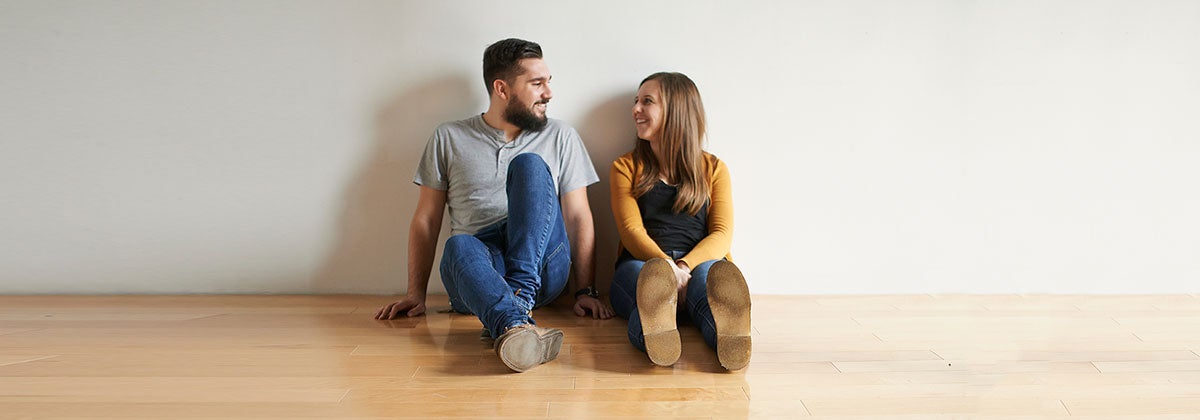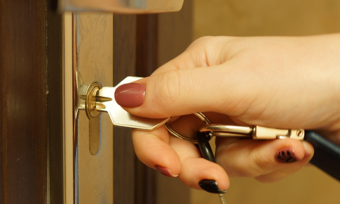Buying a home is (probably) going to be the biggest investment you’ll ever make. As a first home buyer, when you’re already fronting up such a hefty chunk of change, you’ll want to make sure you’re not getting stung by any hidden homebuying costs along the way – as people often are.
Beyond the purchase price, there are a few expenses you need to prepare for: professional services during the house-hunt, mortgage repayments (of course), renovation and repair bills, ongoing fees, council rates and the cost of furbishing your new digs.
We don’t want anything to take away from the sweet glow that comes with new home ownership, so let’s take a look at the things you need to factor into your budget to avoid any big surprises.

Hidden homebuying costs 1: House hunting expenses
We admit, spending your commute scrolling the web for listings and wandering through strangers’ homes at the weekend are pretty low-cost activities. Once you start looking seriously, though, it’s a smart idea to get a few professionals on board to help you navigate the finer details before you make any big decisions. You’ll need:
A lawyer or conveyancer
Buying a house is a legal transaction that comes with a lot of paperwork. A lawyer or conveyancer is key to helping you unpack the jargon, so you know exactly what you’re signing up for.
Get them to take a look at the record of title for the property. It shows exactly where the boundaries are, and has a record of information about your rights and restrictions.
Lawyers can also charge on a per property basis to look over auction documents (like the LIM and auction contract). That fee’s likely to be in the $250-$300 range – which can add up if you’re getting them to look at multiple properties before you actually buy.
All up, the standard legal fees for a house purchase can range from $1500 to $3000, depending on the type of property and amount of work involved on the lawyer’s end. Buying a new build, or building yourself, will mean more contracts for them to look over, so that’s going to cost extra.
Your mortgage adviser will be able to recommend a lawyer, or if you want to do your own research, check out the New Zealand Law Society’s list of property lawyers.

A qualified building inspector
If a property’s taken your fancy, it’s worth hiring a qualified building inspector to check it out. Some sellers or real estate agents will offer you a pre-prepared report for a property, but we’d always recommend getting your own done by someone you trust.
Remember, you don’t need to be certified to be a building inspector in New Zealand, so it can be worth shopping around.
As a general rule, you can expect to pay anywhere from around $300 to $1000 for a report – depending on the type of inspection and the size of the property. Some inspectors will offer a verbal-only report as a cheaper option, whereas a written report is going to set you back at least $500.
Still, getting one done now could prevent painful and costly surprises later on… And can you really put a price on peace of mind?
Building inspectors will be able to estimate how much any renovations, repairs and ongoing maintenance will cost you, too.
Check out the New Zealand Institute of Building Surveyors or the Building Officials Institute of New Zealand to find an inspector in your area.
Land Information Memorandum (LIM report)
Last but not least, as part of the pre-purchase phase, you’ll need to get in touch with your local council for the property’s Land Information Memorandum, or what us regular folk call a LIM report.
The report will include a summary of current property information held by the council, including the rates, consent for work done on the property and if there are any known land issues, such as subsidence or flooding. Information can be added to a LIM over time — so if you’re offered one by a seller or real estate agent, make sure it’s up to date.
Prices will differ depending on where you’re buying – but ballpark should be somewhere in the $300 – $400 range. If you need it urgently, within 48 hours or so, you’ll have to pay a bit more.
You can also ask to see the council file on your property, which may contain information that isn’t in the LIM. Costs for this vary too.

Hidden homebuying costs 2: Mortgage repayments
Well, this one’s a given. A mortgage repayment is the regular payment you make to the bank to repay your home loan – calculated as the total loan amount (house price minus the deposit you paid), with interest added on.
There are a couple of key things to bear in mind:
Estimate the mortgage you can afford
Here’s where the number-crunching comes in. If you’re feeling a bit lost or overwhelmed at the thought, we get it. A mortgage calculator is a good starting point to help you estimate how much you can afford to borrow, or what your repayments will be.
It’s better to bite the bullet and do this sooner rather than later, so you’re clear what you’ve got to work with.
Don’t forget to factor in changing interest rates
Banks will test your ability to repay using a much higher figure than current interest rates, just to make sure you can still manage even if rates do go up.
At the moment, that magic number is (on average) a whopping 6.50 per cent, although that can vary slightly from lender to lender. In the happy event interest rates go down, you can chat to your adviser about ways to pay off your loan faster.
Remember, too, that you should always shop around when it comes to finding a lender, and a great mortgage adviser is going to be your best asset in helping you get the best interest rates.

Hidden homebuying costs 3: Renovation costs
As anyone who has ever dabbled in a bit of DIY will tell you, the great Kiwi tradition of “doing up the place” can be more expensive than you think. The key to surviving with your bank account intact is to make sure you know what you’re getting yourself into.
It can be a great idea to give yourself a few months in the property before you start smashing through walls and making other grand plans. Understanding how you live in the house as it is will help you make the improvements that work best for you.
Once you know what needs doing, don’t make the mistake of thinking you’ll be able to whizz through the reno like they do on TV. Do some solid research about how long it’ll take and how much it may cost.
Set a realistic budget, and then factor in a 10% to 15% buffer for any hiccups along the way.
If there’s a long list of jobs to tackle, prioritise the ones that are going to have the biggest impact. Insulation and heating are great places to start. Improvements to the kitchen, bathrooms, or outdoor spaces (like a patio or deck) are going to help you add real value, too.
At Squirrel we have a Homeowner’s Loan to help Kiwis fund their home renovations — it’s your fastest way to borrow for the house, without having to talk to the bank.
Hidden homebuying costs 4: Furnishings and fit-out
Believe us when we say the temptation to max out the credit card on new furniture (and bring those Pinterest mood boards to life) will be strong. But there’s no rule that says you need to fill a house with furniture the minute you move in.
In the long run, it’s going to be a far better idea to work out what you need once you’re more settled (though, obviously, beds are pretty crucial for a comfortable first night).
The sale and purchase agreement (the legal document you signed when you made the offer) should have details of the chattels – things like the dishwasher, stove, curtains and light fittings – that are included in the sale. If you’re lucky, you might even pick up the fridge or washing machine!
If you’re on a budget, take it as a chance to think a little laterally. There are plenty of great bargains to be had on sites like Trade Me or Facebook Marketplace; and op shops and furniture outlet stores can be real treasure troves as well.
Hidden homebuying costs 5: Ongoing costs
When you make it into your own home, it’s safe to say you’ve hit peak adulthood. And sadly, there are few things more certain in adulthood than bills. You should prepare yourself for a series of ongoing bills to start turning up the minute you move in. Factoring the following into your household budget will ensure you don’t get caught out:
Council rates
As a homeowner, council rates are probably going to be your biggest ongoing expense. The fees go towards maintaining public infrastructure, services and facilities in your area – things like roading, rubbish collections, public parks and reserves, stormwater drains and libraries.
Rates will vary depending on where you live, so we’d suggest jumping onto your council website to find out how much they are in your area. Rather than paying in several lump sums, you can often opt into more regular direct debit payments, making things a lot more manageable.
Body corporate fees
If you buy an apartment or unit, you’ll need to front up for body corporate fees – to help cover things like the upkeep of the building and its facilities, insurance and the cost of power in common areas (for example).
Before you buy, do your due diligence around the body corporate fees and how the property is run. For existing apartments, we’d always recommend reading (and getting your solicitor to read) the latest body corporate minutes, too. These may highlight any ongoing maintenance issues or repairs associated with the property.
Insurance
Given your house is probably going to be the biggest purchase you’ll ever make, you want to make sure you, your family, and your biggest asset are protected from any worst-case scenarios. So ensure that you review your home and contents and other insurance policies regularly, to ensure you’ve the right level of cover.
Maintenance
Even if you’re buying a brand-new property, or building from scratch, any home is going to need a bit of TLC as the years go on. It’s easy enough to keep on top of the little jobs yourself, but for the big stuff like roofing, exterior repainting and sorting out leaks or plumbing issues, you’ll probably need to get the professionals in. It’s a good idea to plan for these extra costs early on, and start squirrelling a bit of cash away so you’re covered when you need it.
Now you know all about the extra costs that come with being a first home buyer, you can get yourself prepared. A big part of home ownership is learning to balance your mortgage repayments with all these other costs, in a way which still supports the lifestyle you want to lead.
If you get the balance right, you should be able to take care of all the adulty stuff without having to give up Sunday brunch plans. We’d recommend you set your budget accordingly, and have separate accounts for the different types of costs.
Our mortgage advisers will be able to help you structure your mortgage in a way that works best for you, and your lifestyle – factoring in your plans for the future, too.
 John Bolton founded Squirrel in 2008. He is a former General Manager at ANZ, where he was responsible for the bank’s $60bn of retail lending and deposits. He has 10 years of senior banking experience behind him in financial markets, treasury, finance, and strategy, and is a director of Financial Advice New Zealand, the industry body for financial advisers. Check out Squirrel’s website for how Squirrel helps first home buyers, here.
John Bolton founded Squirrel in 2008. He is a former General Manager at ANZ, where he was responsible for the bank’s $60bn of retail lending and deposits. He has 10 years of senior banking experience behind him in financial markets, treasury, finance, and strategy, and is a director of Financial Advice New Zealand, the industry body for financial advisers. Check out Squirrel’s website for how Squirrel helps first home buyers, here.
Enjoy reading this article?
You can like us on Facebook and get social, or sign up to receive more news like this straight to your inbox.
By subscribing you agree to the Canstar Privacy Policy





Share this article